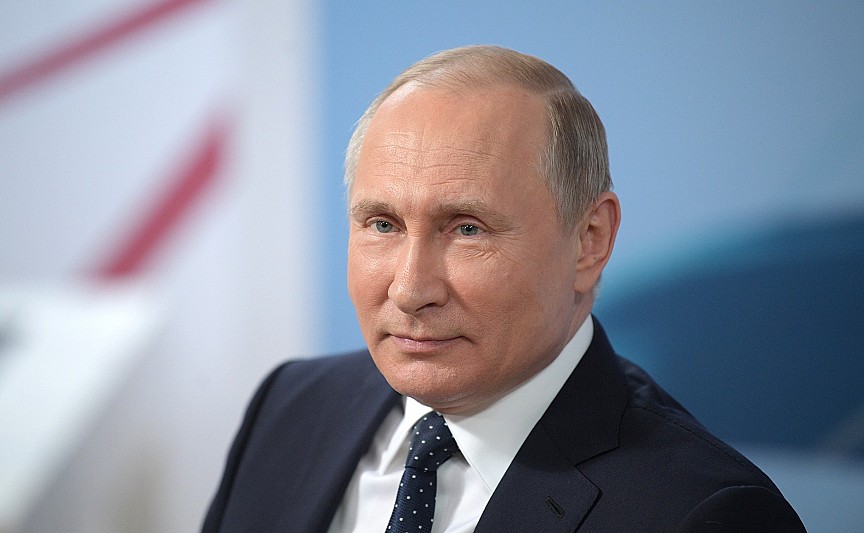Russia’s Economy Surges in 2024 Despite Global Pressures
13.07.2024 18:00 1 min. read Alexander Stefanov
In 2024, Russia's economy shows robust growth, surpassing expectations with a 5% GDP increase in the first five months.
Prime Minister Mikhail Mishustin highlighted this progress, noting a slight acceleration in growth to 4.5% in May. The manufacturing sector, driven largely by machine building, expanded by nearly 9%, supported by a 15% rise in investments in machinery, equipment, and intellectual property by the end of the first quarter.
Companies are reinvesting profits, and regional investments are intensifying, contributing to long-term economic stability, according to Mishustin. Despite strong consumer activity bolstered by rising incomes, inflation reached 4.5% by July 1, prompting close monitoring in collaboration with the Bank of Russia.
Russia’s oil revenue surged nearly 50% in June 2024 compared to the previous year, attributed to successful adaptations to Western sanctions, particularly with its flagship Urals crude oil. Moscow’s oil-related tax revenues also saw a substantial increase, reaching 590.6 billion rubles from 402 billion rubles in June 2023.
President Vladimir Putin recently approved tax amendments aimed at fostering a balanced tax system, following a budget deficit in 2023 amounting to around 3.2 trillion rubles or 2% of GDP. These changes were passed by Russia’s parliament earlier this week under Finance Minister Anton Siluanov’s guidance to ensure fairness.
-
1
Economic Instability and Political Shift Fueling Bitcoin’s Rise – Galaxy Digital CEO
23.05.2025 12:00 2 min. read -
2
Trump Renews Attack on Fed Chair, Calls for Immediate Rate Cuts
18.05.2025 8:00 1 min. read -
3
Japan’s Inflation Hits 3.5% as Food Prices Soar and Tariff Risks Loom
23.05.2025 21:00 1 min. read -
4
US Dollar Dominance Under Threat Amid Yuan’s Global Ambitions
22.05.2025 14:00 2 min. read -
5
Wall Street Analyst Sees Bright Side of Ballooning U.S. Debt
30.05.2025 8:00 2 min. read
Tariffs Threaten to Stall U.S. Growth in 2025, Recovery Not Expected Until 2026
The U.S. economy may be closer to a downturn than many realize, according to Jay Bryson, chief economist at Wells Fargo.
Dollar Faces Deep Decline as Fed Cuts Pressure Currency, Warns Morgan Stanley
Morgan Stanley has issued a cautionary outlook on the U.S. dollar, predicting a major decline over the coming year as Federal Reserve rate cuts take hold.
Trillions in Debt Payments Could Break U.S. Economy, Ray Dalio Predicts
Legendary investor Ray Dalio has issued a stark warning about the trajectory of U.S. government finances, suggesting the country is drifting toward a series of severe economic shocks unless its debt spiral is urgently addressed.
Wall Street Veteran Warns Tariffs Could Disrupt AI-Driven Market Rally
Steve Eisman, the famed investor known for forecasting the 2008 housing collapse, is sounding the alarm—not on overvalued tech stocks or interest rates, but on the escalating risk of global trade disputes.
-
1
Economic Instability and Political Shift Fueling Bitcoin’s Rise – Galaxy Digital CEO
23.05.2025 12:00 2 min. read -
2
Trump Renews Attack on Fed Chair, Calls for Immediate Rate Cuts
18.05.2025 8:00 1 min. read -
3
Japan’s Inflation Hits 3.5% as Food Prices Soar and Tariff Risks Loom
23.05.2025 21:00 1 min. read -
4
US Dollar Dominance Under Threat Amid Yuan’s Global Ambitions
22.05.2025 14:00 2 min. read -
5
Wall Street Analyst Sees Bright Side of Ballooning U.S. Debt
30.05.2025 8:00 2 min. read


